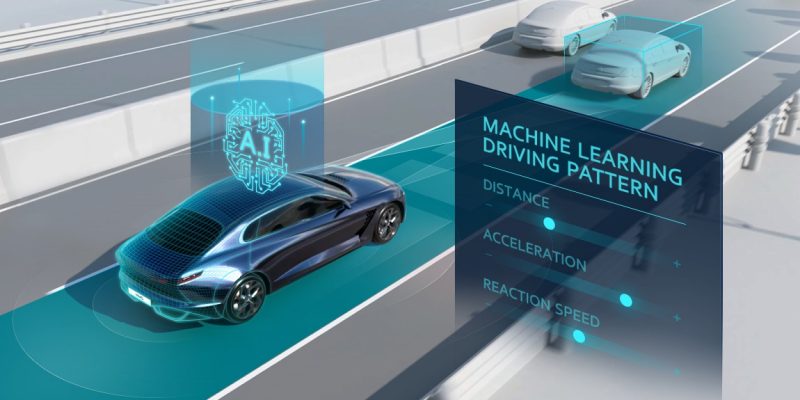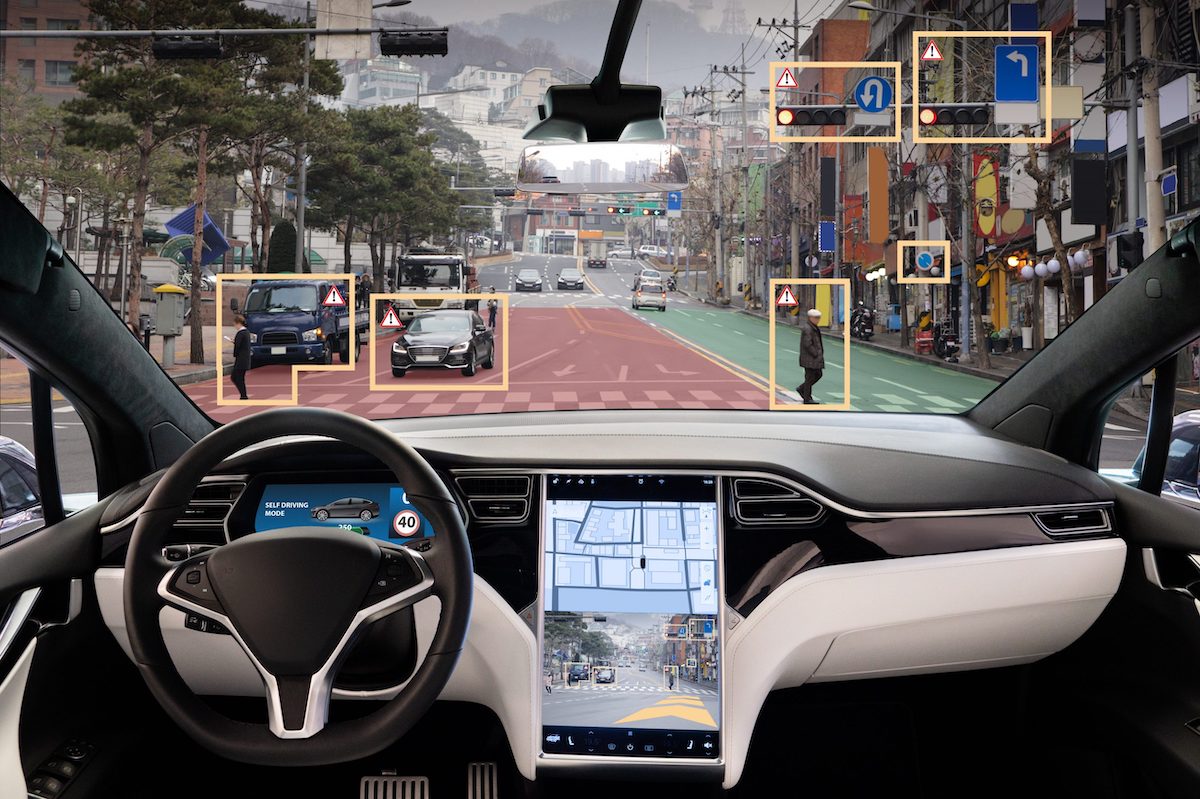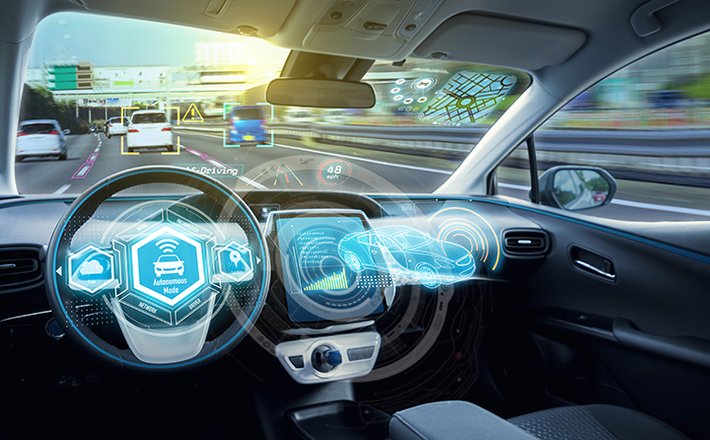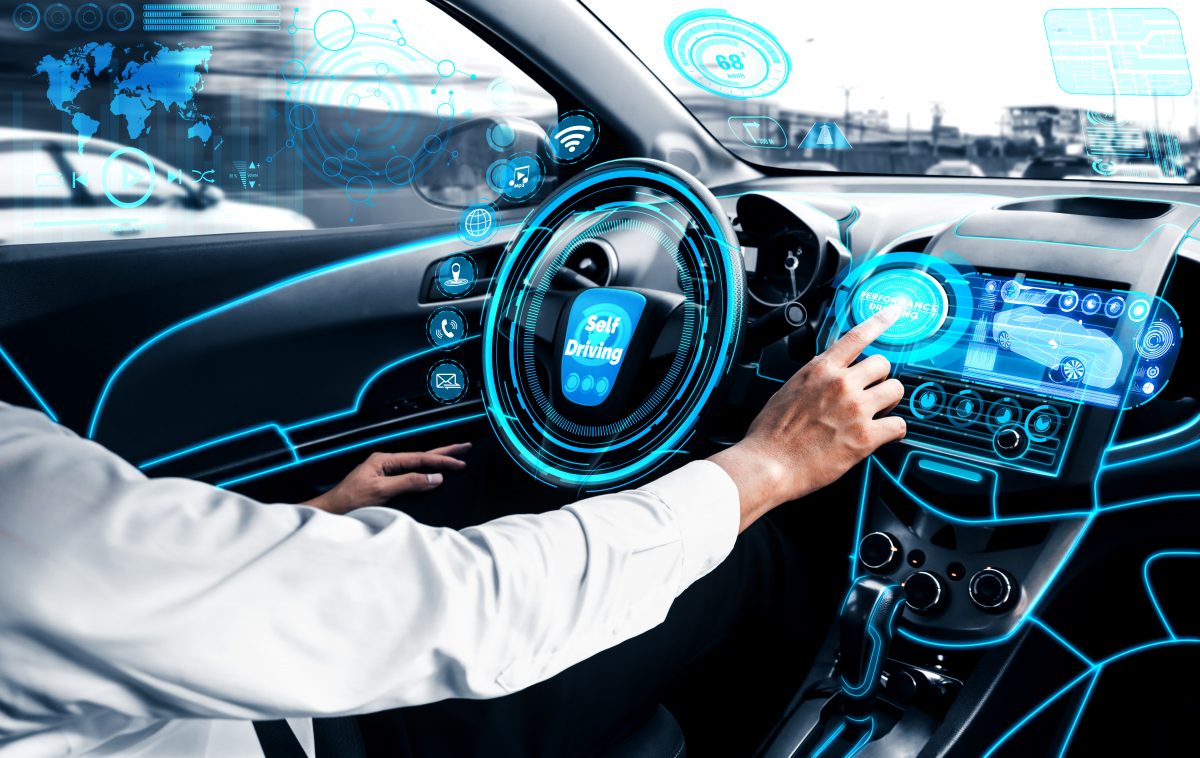Machine Learning in Autonomous Vehicles
Autonomous vehicles (AVs) are vehicles that are capable of operating without human input. They are equipped with sensors, cameras, and artificial intelligence (AI) software that allow them to navigate roads and avoid obstacles without human assistance.

Machine learning (ML) is a type of AI that allows computers to learn from data without being explicitly programmed. ML algorithms are used in AVs to perform a variety of tasks, such as:
- Object detection: AVs use ML algorithms to identify objects in their surroundings, such as other vehicles, pedestrians, and traffic signs. This information is used to create a 3D map of the environment and to make decisions about how to navigate safely.
- Path planning: AVs use ML algorithms to plan the best path to their destination. This involves taking into account factors such as traffic conditions, road obstacles, and the speed of other vehicles.
- Motion control: AVs use ML algorithms to control their speed and steering. This ensures that they are able to navigate safely and smoothly.
ML is a key technology that is essential for the development of safe and reliable AVs. By allowing AVs to learn from data, ML algorithms can help them to adapt to changing conditions and to make decisions that are in the best interests of all road users.

Benefits of Machine Learning in Autonomous Vehicles
There are a number of benefits of using ML in autonomous vehicles, including:
- Improved safety: ML algorithms can help AVs to make more accurate and timely decisions than human drivers. This can lead to a reduction in accidents and injuries.
- Increased efficiency: ML algorithms can help AVs to navigate traffic more efficiently and to avoid congestion. This can lead to shorter travel times and reduced fuel consumption.
- Environmental benefits: AVs can help to reduce pollution and emissions by driving more smoothly and efficiently. They can also be used to provide shared transportation services, which can reduce the number of vehicles on the road.

Challenges of Machine Learning in Autonomous Vehicles
There are also a number of challenges associated with using ML in autonomous vehicles, including:
- Data collection: AVs need to be able to collect large amounts of data in order to train their ML algorithms. This data can be difficult to collect, especially in real-world driving conditions.
- Algorithm development: Developing ML algorithms that are safe and reliable is a complex and challenging task. It is important to ensure that the algorithms are able to handle a variety of situations and that they do not make mistakes that could lead to accidents.
- Regulation: The development and deployment of AVs is regulated by a variety of government agencies. It is important to ensure that AVs meet the relevant safety and performance standards before they are allowed to operate on public roads.

Future of Machine Learning in Autonomous Vehicles
The future of ML in autonomous vehicles is promising. As the technology continues to develop, AVs will become safer, more efficient, and more environmentally friendly. They will also play a vital role in reducing traffic congestion and improving air quality.
Here are some of the ways that ML is expected to impact the future of autonomous vehicles:

- AVs will become more autonomous: As ML algorithms become more sophisticated, AVs will be able to operate without human input in a wider range of situations. This will make them safer and more convenient to use.
- AVs will be able to communicate with each other: ML algorithms will allow AVs to share information with each other, such as their location and speed. This will help them to navigate traffic more efficiently and to avoid accidents.
- AVs will be used for shared transportation services: ML algorithms will allow AVs to be used for shared transportation services, such as ride-hailing and carpooling. This will reduce the number of vehicles on the road and help to improve traffic congestion.
The development of autonomous vehicles is a major undertaking, but it is one that has the potential to revolutionize transportation. By using ML, AVs can become safer, more efficient, and more environmentally friendly. They can also play a vital role in reducing traffic congestion and improving air quality.
Conclusion


Machine learning is a key technology that is essential for the development of safe and reliable autonomous vehicles. By allowing AVs to learn from data, ML algorithms can help them to make decisions that are in the best interests of all road users. As the technology continues to develop, AVs will become more autonomous, more efficient, and more environmentally friendly. They will also play a vital role in reducing traffic congestion and improving air quality.
Post a Comment